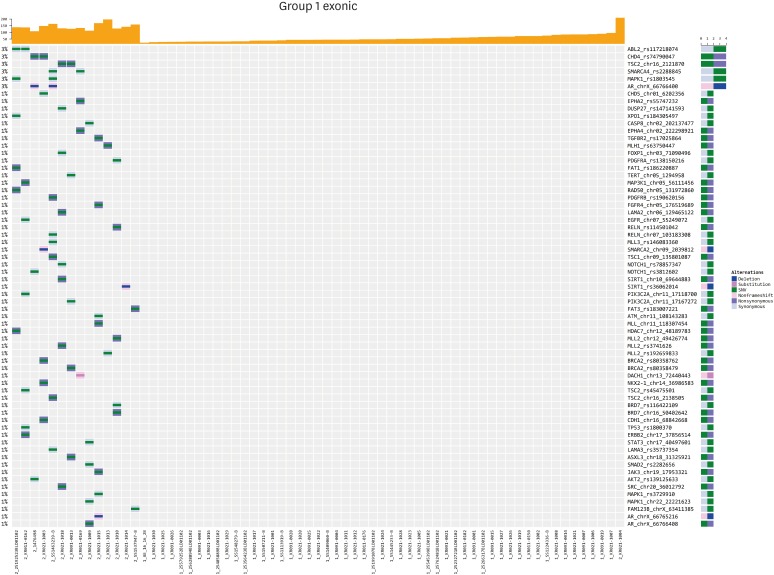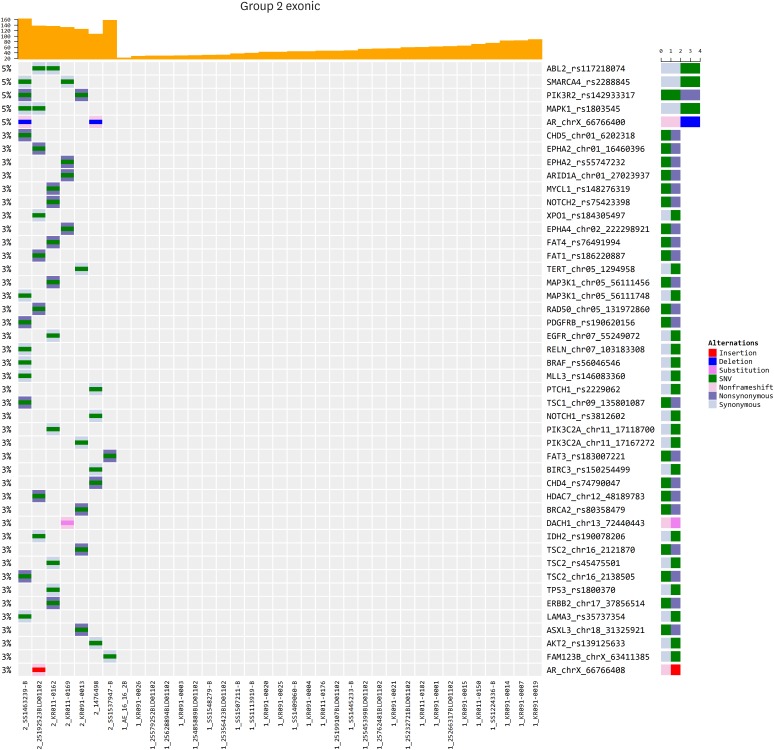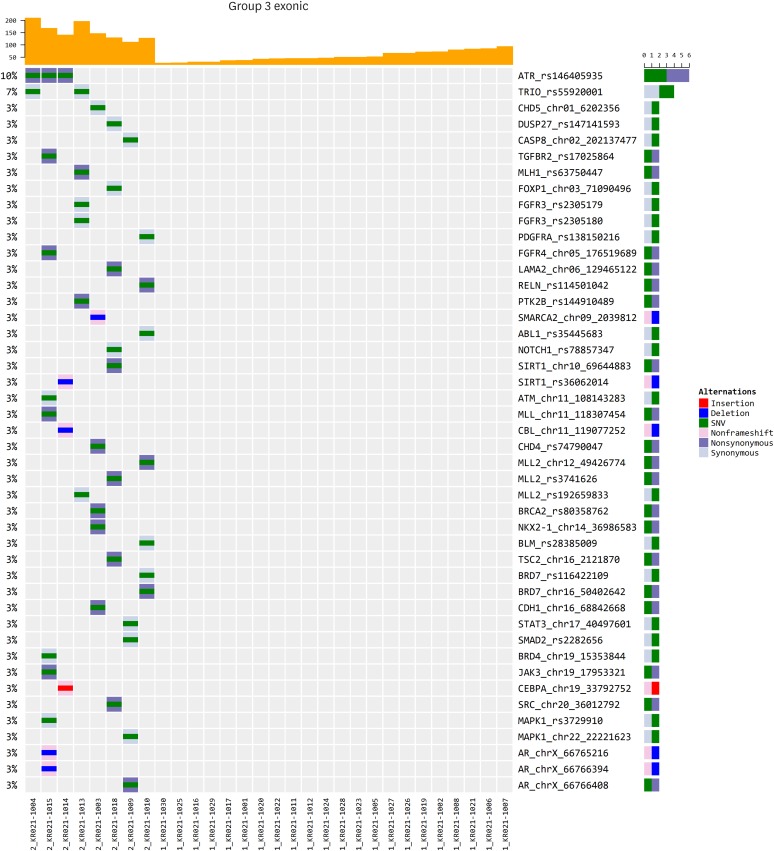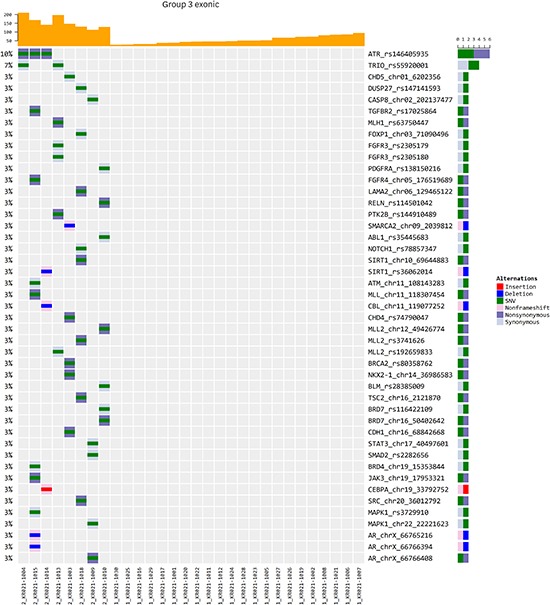1. Choi JR, Park SY, Noh OK, Koh YW, Kang DR. Gene mutation discovery research of non-smoking lung cancer patients due to indoor radon exposure. Ann Occup Environ Med. 2016; 28(1):13. PMID:
26985396.
2. Lee YJ, Cho BC, Jee SH, Moon JW, Kim SK, Chang J, et al. Impact of environmental tobacco smoke on the incidence of mutations in epidermal growth factor receptor gene in never-smoker patients with non-small-cell lung cancer. J Clin Oncol. 2010; 28(3):487–492. PMID:
20008630.
3. Couraud S, Zalcman G, Milleron B, Morin F, Souquet PJ. Lung cancer in never smokers--a review. Eur J Cancer. 2012; 48(9):1299–1311. PMID:
22464348.
4. Hubaux R, Becker-Santos DD, Enfield KS, Lam S, Lam WL, Martinez VD. Arsenic, asbestos and radon: emerging players in lung tumorigenesis. Environ Health. 2012; 11(1):89. PMID:
23173984.
5. Parkin DM, Bray F, Ferlay J, Pisani P. Global cancer statistics, 2002. CA Cancer J Clin. 2005; 55(2):74–108. PMID:
15761078.
6. Sun S, Schiller JH, Gazdar AF. Lung cancer in never smokers--a different disease. Nat Rev Cancer. 2007; 7(10):778–790. PMID:
17882278.
7. Pallis AG, Syrigos KN. Lung cancer in never smokers: disease characteristics and risk factors. Crit Rev Oncol Hematol. 2013; 88(3):494–503. PMID:
23921082.
8. Lino AR, Abrahão CM, Amarante MP, de Sousa Cruz MR. The role of the implementation of policies for the prevention of exposure to Radon in Brazil-a strategy for controlling the risk of developing lung cancer. Ecancermedicalscience. 2015; 9(1):572. PMID:
26435745.
9. Lubin JH, Boice JD Jr, Edling C, Hornung RW, Howe GR, Kunz E, et al. Lung cancer in radon-exposed miners and estimation of risk from indoor exposure. J Natl Cancer Inst. 1995; 87(11):817–827. PMID:
7791231.
10. Barros-Dios JM, Ruano-Ravina A, Pérez-Ríos M, Castro-Bernárdez M, Abal-Arca J, Tojo-Castro M. Residential radon exposure, histologic types, and lung cancer risk. A case-control study in Galicia, Spain. Cancer Epidemiol Biomarkers Prev. 2012; 21(6):951–958. PMID:
22539606.
11. Baysson H, Tirmarche M. Indoor radon exposure and lung cancer risk: a review of case-control studies. Rev Epidemiol Sante Publique. 2004; 52(2):161–171. PMID:
15138395.
12. Hsiung CA, Lan Q, Hong YC, Chen CJ, Hosgood HD, Chang IS, et al. The 5p15.33 locus is associated with risk of lung adenocarcinoma in never-smoking females in Asia. PLoS Genet. 2010; 6(8):e1001051. PMID:
20700438.
13. Amos CI, Wu X, Broderick P, Gorlov IP, Gu J, Eisen T, et al. Genome-wide association scan of tag SNPs identifies a susceptibility locus for lung cancer at 15q25.1. Nat Genet. 2008; 40(5):616–622. PMID:
18385676.
14. McKay JD, Hung RJ, Gaborieau V, Boffetta P, Chabrier A, Byrnes G, et al. Lung cancer susceptibility locus at 5p15.33. Nat Genet. 2008; 40(12):1404–1406. PMID:
18978790.
15. Ruano-Ravina A, Pereyra MF, Castro MT, Pérez-Ríos M, Abal-Arca J, Barros-Dios JM. Genetic susceptibility, residential radon, and lung cancer in a radon prone area. J Thorac Oncol. 2014; 9(8):1073–1080. PMID:
24852519.
16. Bonner MR, Bennett WP, Xiong W, Lan Q, Brownson RC, Harris CC, et al. Radon, secondhand smoke, glutathione-S-transferase M1 and lung cancer among women. Int J Cancer. 2006; 119(6):1462–1467. PMID:
16642467.
17. Kiuru A, Lindholm C, Heilimo I, Ceppi M, Koivistoinen A, Ilus T, et al. Influence of DNA repair gene polymorphisms on the yield of chromosomal aberrations. Environ Mol Mutagen. 2005; 46(3):198–205. PMID:
15971256.
18. Yngveson A, Williams C, Hjerpe A, Lundeberg J, Söderkvist P, Pershagen G. p53 Mutations in lung cancer associated with residential radon exposure. Cancer Epidemiol Biomarkers Prev. 1999; 8(5):433–438. PMID:
10350439.
19. Hayes VM, Oosthuizen CJ, Kotze MJ, Marx MP, Buys CH. A nonsense mutation (Arg-196-Term) in exon 6 of the human TP53 gene identified in small cell lung carcinoma. Mol Cell Probes. 1996; 10(5):393–395. PMID:
8910896.
20. Leng S, Picchi MA, Liu Y, Thomas CL, Willis DG, Bernauer AM, et al. Genetic variation in SIRT1 affects susceptibility of lung squamous cell carcinomas in former uranium miners from the Colorado plateau. Carcinogenesis. 2013; 34(5):1044–1050. PMID:
23354305.
21. Samet JM, Avila-Tang E, Boffetta P, Hannan LM, Olivo-Marston S, Thun MJ, et al. Lung cancer in never smokers: clinical epidemiology and environmental risk factors. Clin Cancer Res. 2009; 15(18):5626–5645. PMID:
19755391.
22. Prise KM, Pinto M, Newman HC, Michael BD. A review of studies of ionizing radiation-induced double-strand break clustering. Radiat Res. 2001; 156(5 Pt 2):572–576. PMID:
11604074.
23. McDonald JW, Taylor JA, Watson MA, Saccomanno G, Devereux TR. p53 and K-ras in radon-associated lung adenocarcinoma. Cancer Epidemiol Biomarkers Prev. 1995; 4(7):791–793. PMID:
8672998.
24. Sethi TK, El-Ghamry MN, Kloecker GH. Radon and lung cancer. Clin Adv Hematol Oncol. 2012; 10(3):157–164. PMID:
22402423.
25. Archer VE, Renzetti AD, Doggett RS, Jarvis JQ, Colby TV. Chronic diffuse interstitial fibrosis of the lung in uranium miners. J Occup Environ Med. 1998; 40(5):460–474. PMID:
9604184.
26. Iyer R, Lehnert BE, Svensson R. Factors underlying the cell growth-related bystander responses to alpha particles. Cancer Res. 2000; 60(5):1290–1298. PMID:
10728689.
27. Mapel DW, Coultas DB, James DS, Hunt WC, Stidley CA, Gilliland FD. Ethnic differences in the prevalence of nonmalignant respiratory disease among uranium miners. Am J Public Health. 1997; 87(5):833–838. PMID:
9184515.
28. Narayanan PK, Goodwin EH, Lehnert BE. Alpha particles initiate biological production of superoxide anions and hydrogen peroxide in human cells. Cancer Res. 1997; 57(18):3963–3971. PMID:
9307280.
29. Rosanna DP, Salvatore C. Reactive oxygen species, inflammation, and lung diseases. Curr Pharm Des. 2012; 18(26):3889–3900. PMID:
22632750.
30. Schubauer-Berigan MK, Daniels RD, Pinkerton LE. Radon exposure and mortality among white and American Indian uranium miners: an update of the Colorado Plateau cohort. Am J Epidemiol. 2009; 169(6):718–730. PMID:
19208723.
31. National Research Council Committee on the Biological Effects of Ionizing Radiations. Washington, DC: National Academies Press;1988.
32. Iwamoto S, Tanimoto K, Nishio Y, Putra AC, Fuchita H, Ohe M, et al. Association of EPAS1 gene rs4953354 polymorphism with susceptibility to lung adenocarcinoma in female Japanese non-smokers. J Thorac Oncol. 2014; 9(11):1709–1713. PMID:
25436804.
33. Yamada M, Sato N, Ikeda S, Arai T, Sawabe M, Mori S, et al. Association of the chromodomain helicase DNA-binding protein 4 (CHD4) missense variation p.D140E with cancer: potential interaction with smoking. Genes Chromosomes Cancer. 2015; 54(2):122–128. PMID:
25407497.
34. Denslow SA, Wade PA. The human Mi-2/NuRD complex and gene regulation. Oncogene. 2007; 26(37):5433–5438. PMID:
17694084.
35. Liang MC, Ma J, Chen L, Kozlowski P, Qin W, Li D, et al. TSC1 loss synergizes with KRAS activation in lung cancer development in the mouse and confers rapamycin sensitivity. Oncogene. 2010; 29(11):1588–1597. PMID:
19966866.
36. Deng Y, Wang J, Wang L, Du Y. Androgen receptor gene CAG repeat polymorphism and ovarian cancer risk: A meta-analysis. Biosci Trends. 2017; 11(2):193–201. PMID:
28250337.







 PDF
PDF Citation
Citation Print
Print




 XML Download
XML Download